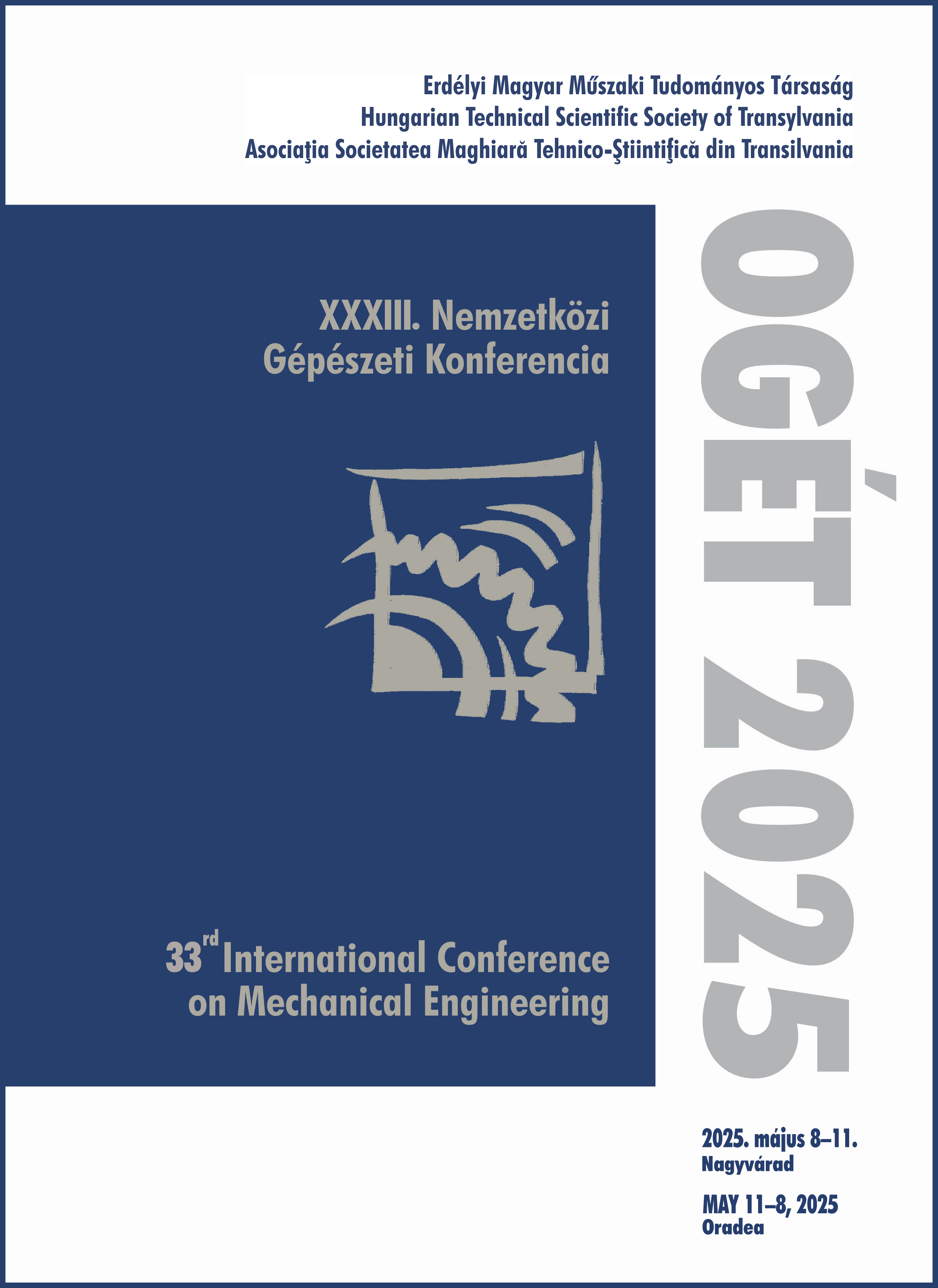Kísérleti módszertanfejlesztés alternatív tüzelőanyaggal szennyezett kenőolajok vizsgálatához
Development of an Experimental Methodology for the Analysis of Lubricating Oils Contaminated with Alternative Fuels
Keywords:
oil analysis, FTIR, viscometry, methanol, butanol, /, olajanalízis, viszkoziméter, metanolAbstract
Driven by the global transition away from fossil fuels, increasing scientific attention has been directed toward evaluating the feasibility and impacts of alternative fuel applications. This study investigates the effects of methanol and butanol on lubricating oils using a viscometer and Fourier-transform infrared spectroscopy (FTIR). The primary objective was to develop an analytical methodology for examining lubricants contaminated with alternative fuels and preparing them for further tribological studies. Additionally, the study aimed to establish a lubricant database to facilitate the accurate determination of alternative fuel content in used oil samples obtained from engine bench applications.
Kivonat
A fosszilis tüzelőanyagok fokozatos leváltására irányuló törekvésekkel egyre nagyobb figyelem irányul az alternatív tüzelőanyagok alkalmazhatóságának vizsgálatára. Jelen kutatás a metanol és butanol kenőolajokra gyakorolt hatását vizsgálja viszkoziméter és Fourier-transzformációs infravörös spektroszkópia (FTIR) segítségével. A kutatás célja egy analitikai módszertan kidolgozása volt az alternatív tüzelőanyagokkal szennyezett kenőolajok vizsgálatára és további tribológiai kutatásokhoz való előkészítésére. További célok között szerepelt egy kenőolaj-adatbázis létrehozása, amely segíti a motorfékpadi alkalmazásokból származó használt olajminták alternatív tüzelőanyag-tartalmának pontos meghatározását.
References
Rosales-Calderon O., Arantes V. A review on commercial-scale high-value products that can be produced alongside cellulosic ethanol. Biotechnology for Biofuels, BioMed Central, 2019, 12, 240.
Singh S., Kumar A., Sivakumar N., Verma J. P. Deconstruction of lignocellulosic biomass for bioethanol production: Recent advances and future prospects. Fuel, Elsevier, 2022, 327, 125109.
Wouters C., Lehrheuer B., Heuser B., Pischinger S. Gasoline blends with methanol, ethanol and butanol. MTZ worldwide, Springer, 2020, 81(3), 16–21.
Dou Z., Yao C., Wei H., Wang B., Liu M., Chen C., Shi J. Experimental study of the effect of engine parameters on ultrafine particle in diesel/methanol dual fuel engine. Fuel, Elsevier, 2017, 192, 45–52.
Mhadi A. I., Asmah B. M., Shuhimi M., El-Adawy M., Veza I., Nemitallah M. A., Alqaed S. Effect of ethanol-butanol-gasoline blends on flame propagation speed and combustion characteristics at elevated temperatures. SSRN Electronic Journal, Elsevier, 2024.
Sinha I., Datta A., Mandal B. K. Effect of different quaternary blends of diesel-ethanol-methanol-butanol on combustion and spray characteristics of diesel engine. Thermal Science, Institute of Nuclear Sciences Vinca, 2024, (00), 190–190.
Chybowski L., Wójcik W., Szczepanek M. Evaluation of Rheological and Lubrication Properties of Selected Alcohol Fuels. Energies, MDPI, 2025, 18(5), 1038.
Khuong L. S., Masjuki H. H., Zulkifli N. W. M., Mohamad E. N., Kalam M. A., Alabdulkarem A., Jamshaid M. Effect of gasoline–bioethanol blends on the properties and lubrication characteristics of commercial engine oil. RSC Advances, Royal Society of Chemistry, 2017, 7(25), 15005–15019.
Ijaz Malik M. A., Usman M., Hayat N., Zubair S. W. H., Bashir R., Ahmed E. Experimental evaluation of methanol-gasoline fuel blend on performance, emissions and lubricant oil deterioration in SI engine. Advances in Mechanical Engineering, SAGE Publications, 2021, 13(6), 16878140211025213.
Chowdary K., Tated M. K., Kotia A. Effect of methanol and ethanol on lubrication oil degradation of CI engine. Journal of the Gujarat Research Society, Gujarat Research Society, 2019, 21(8s), 156–166.
Koller T., Tóth-Nagy C., Perger J. Implementation of vehicle simulation model in a modern dynamometer test environment. Cognitive Sustainability, Cognitive Sustainability Publishing, 2022, 1(4)
Cipriano E., da Silva Major T. C. F., Pessela B., Barros A. A. C. Production of Anhydrous Ethyl Alcohol from the Hydrolysis and Alcoholic Fermentation of Corn Starch. Cognitive Sustainability, Cognitive Sustainability Publishing, 2022, 1(4).
Virt M., Francesconi V. Z., Drexler M., Arnold U., Sauer J., Zöldy M. An Artificial Intelligence Approach to Predict Physical Properties of Liquid Hydrocarbons. Periodica Polytechnica Chemical Engineering, BME, 2024, 68(4), 561–570.
Miklós E. I. F., Máté T. K. Z. A bioetanol magyarországi bevezetésének műszaki, gazdasági és környezetvédelmi feltételei. Magyar Tudomány, MTA, 2005, 3.
“ASTM E2412-10(2018), Standard Practice for Condition Monitoring of InService Lubricants by Trend Analysis Using Fourier Transform Infrared (FT-IR) Spectrometry.” ASTM International, West Conshohocken, 2018, doi: 10.1520/E2412-10R18.
Dikko, A. B., Eyube, E. S., Eke, E. Studies on density, viscosity, partial molar volume, excess molar volume, and excess viscosity of panadol in methanol+water system at 309.15 K. IOSR Journal of Applied Chemistry, 2015, 7(3), 63-66.


